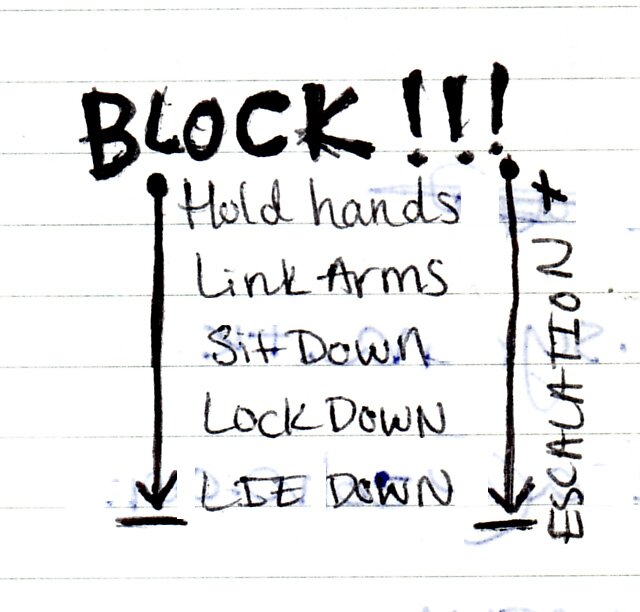
The point is to occupy our schools with clear political purpose. It’s not enough for a tiny band of adventurous students and teachers to take a school building and hoist a flag. We need to gather vast networks of resonant support if school occupations and strikes are to succeed.We can see how in Chile, Puerto Rico, California and around Europe, educational activities proliferated, rather than halted, when people effectively shut down campuses.
We’ve reached a month and a half into Occupy Wall Street—a movement catalyzing millions into decisive action around the world. For many of us, ‘occupy’ has become a verb to be sung. This rowdy crowd word, at once descriptive and prescriptive, aims to body-flip the logic of imperialism on its head. A radical people’s occupation of public space doesn’t erect checkpoints; it tears them down. Instead of usurping others’ resources, we heartily pool our own for free distribution. The call to occupy now reverberates from Oakland ports to NYC Department of Education hearings, from garish Sotheby’s art auctions to rush-hour subway ciphers. The wealthy are now hounded at public appearances, while banks begin to dance the frantic backpedal. The results are in, folks: A poor people’s movement is once again changing the course of history.
So how can we apply such electric tenacity to occupy our schools? Initially, education activists did well to look beyond the immediate horizon of campus grounds and help transform public squares--the movement’s major first act. The recent “People’s University” and “#occupyCUNY” teach-ins at Washington Square Park demonstrated, along with each OWS assembly and Open Forum, how to re-shape public places as free venues for collective education, places where each of us can actively make meaning in a range of critical discussions. With the goal of shaking prevailing school priorities inside out, these wide-open counter-classrooms have been essential. But for our second act (and just in time for winter!), we need to boomerang the “occupy” movement back to where our power was latent all along: our college environments.
Teachers and students reoccupying our schools means jettisoning many failed tenets of higher education’s current operation. Competitive individualized learning, rigid demarcation of disciplines, shallow celebration of difference, grading systems that all-too-viciously distort self-worth—these are the pedagogical tools of the 1%. Instead, let’s host at each campus OWS-style General Assemblies that welcome the surrounding community and put educationally marginalized voices at the top of the speaking list and the top of resulting activities. Let’s collaborate via write-ins to produce "People's Dissertations" about the Occupy movement’s significance, with public writing times, committees of peers and involvement across disciplines. After each dissertation is created, we can hand out P(eople)h(ave)D(dreams) certificates en masse, thus rupturing the emblems of intellectual prestige.
Read more: Step 1: Occupy Universities. Step 2: Transform Them.



